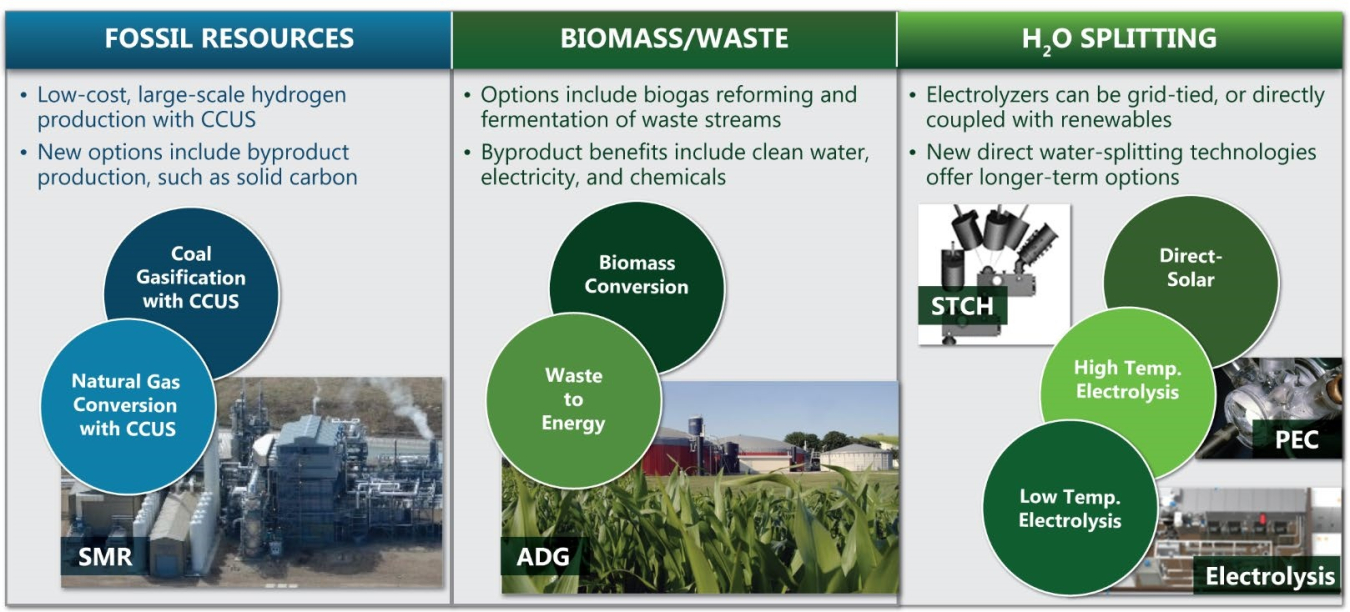
CCUS: carbon capture, utilization, and storage; SMR: steam methane reforming; ADG: anaerobic digester gas; STCH: solar thermochemical hydrogen; PEC: photoelectrochemical
The U.S. Department of Energy (DOE) is focused on developing technologies that can produce hydrogen at $2/kg by 2025 and $1/kg by 2030 via net-zero-carbon pathways. This is in direct support of the Hydrogen Energy Earthshot goal of reducing the cost of clean hydrogen by 80% to $1 per 1 kilogram in 1 decade ("1 1 1"). To reach these goals, the program looks at a wide portfolio of processes over a range of time frames.
Currently, most hydrogen in the United States is produced by large-scale natural gas reforming without carbon capture and storage. This established technology has been shown to be able to reach the cost targets; however, the goal is to reach the cost target via low-carbon pathways. To produce hydrogen economically and via net-zero-carbon pathways, DOE supports the research and development of a wide range of technologies.
In the near- and mid-term, electrolysis pathways (where electricity is used to split water into hydrogen and oxygen) are anticipated to begin reaching the cost targets.
In the mid- to long-term, innovative approaches, such as those using waste streams and others based on solar energy, are expected to become viable.
